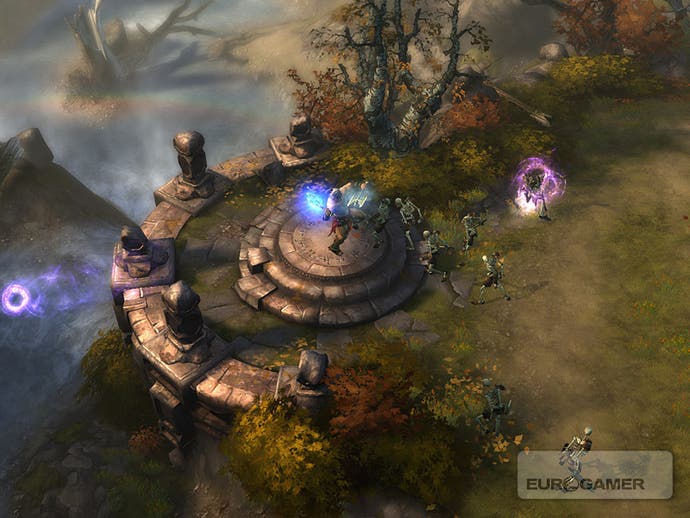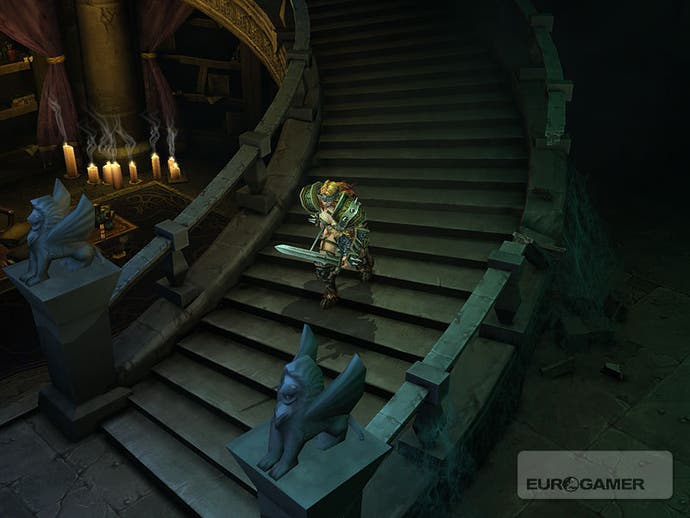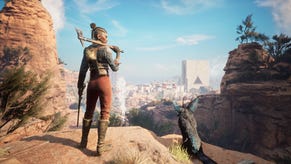Diablo III
Blizzard's next blockbuster dissected.
It's easy to figure out where Blizzard is going with Diablo III. Or so it seems. Throughout the weekend of press conferences, panels and interviews that followed the game's memorable unveiling in Paris last weekend, the developers' speech was peppered with phrases like this:
"Be an awesome action game." "If you can click a mouse, you can play Diablo." "It's frickin' cool to break stuff." "I don't think we've broken a hundred monsters on screen at a time, but we've flirted with it." "It starts an awesomeness arms race." "Monsters do two things: show up and die." "We wanted to make that really loud." "The only thing better than a zombie dog is an exploding zombie dog."
Diablo III is more. More action, more death, more skills, more colour, more story, more beauty, more top-down, click-hungry, loot-happy, fast-paced, over-the-top, randomly-generated, fantasy-horror slaughter. Eight years after the last instalment in Blizzard's classic action-RPG series - probably ten, by the time it comes out - Diablo III is more of the same. Beneath the waves of excitement generated by its return - in the form of twenty stunning minutes of game footage - there is the slightest undertow of anti-climax. Is 'more of the same' really all there is to it?
Blizzard's chief design guru, Rob Pardo - formerly lead designer on World of Warcraft - argues that traditionalism can't really be a sin when no-one else is upholding the tradition. "If there were a ton of games out in the market that are the isometric action-RPG model, then we probably would have more seriously done a different approach," he says, pointing out that two Blizzard "splinter groups" - Flagship and ArenaNet - have already chosen to take "Diabloesque" gameplay in new directions with Hellgate: London and Guild Wars. "But it just always amazes me, with a game series that's as successful as Diablo's been, that I don't feel like there's a lot of great competing games in that same genre."

So the road well-travelled it was, laid out under the eagle eye of the camera; although Diablo III is fully 3D, its top-down camera perspective apes the isometric 2D bitmaps of the previous games in the series. Art director Bryan Morrisroe isn't equivocal: "Isometric was the best decision we could have made," he says. Blizzard is rock-solid in this conviction, and it's right to be for a host of reasons: the quintessential Diablo point-and-click control scheme, the need for spatial awareness of hordes of monsters attacking from all sides, and the randomised modular maps, to name but three.
Oddly, "random" wasn't a word you heard much during the game's initial presentation at the Worldwide Invitational, but it's a cornerstone of the Diablo franchise - randomly-generated maps and monster spawns making the games as frighteningly replayable as they are addictive. Lead designer Jay Wilson - who previously worked at Relic on Dawn of War and Company of Heroes - later explained that dungeons would still be heavily randomsied, but the overworld much less so in Diablo III.
"We decided we're going to make that a more static geography, because we wanted to also start building a world," Pardo explains. "We want you to learn these places, learn where towns and villages are. But we're still going to randomise the monsters on top of it, and that's where the idea for random adventures came from."

Random adventures are the most intriguing concept in Diablo III at present, although Blizzard is quite vague about them, because it's still deciding exactly how they should be implemented. The idea is that, along with layouts and enemy spawns, actual events - some scripted, some AI-driven - can be dropped into play at random, whether in dungeons or on the set overworld maps. The example in the demo footage is a wall collapsing and blocking a path, but others might take the form of moments of NPC drama, or complex, multi-layered enemy encounters.
We'll have to wait - patiently, as followers of Blizzard always have to wait - to find out more about these. But the implications of random adventures are arresting, to say the least. They promise to grant Diablo III the cinematic impact of a heavily scripted, linear action game in a free-form scenario that never plays the same twice, that's always ready to surprise. Suddenly, Diablo III is starting to look a little less traditional.
It's always this way with Blizzard: conservative, sometimes even derivative on the surface, you have to dig deep into the games' designs to find the modest-sounding innovations that subtly but fundamentally rewrite the rules of whatever genre they're working in. The other example in Diablo III - that we currently know about, again - is health globes.






.png?width=291&height=164&fit=crop&quality=80&format=jpg&auto=webp)


